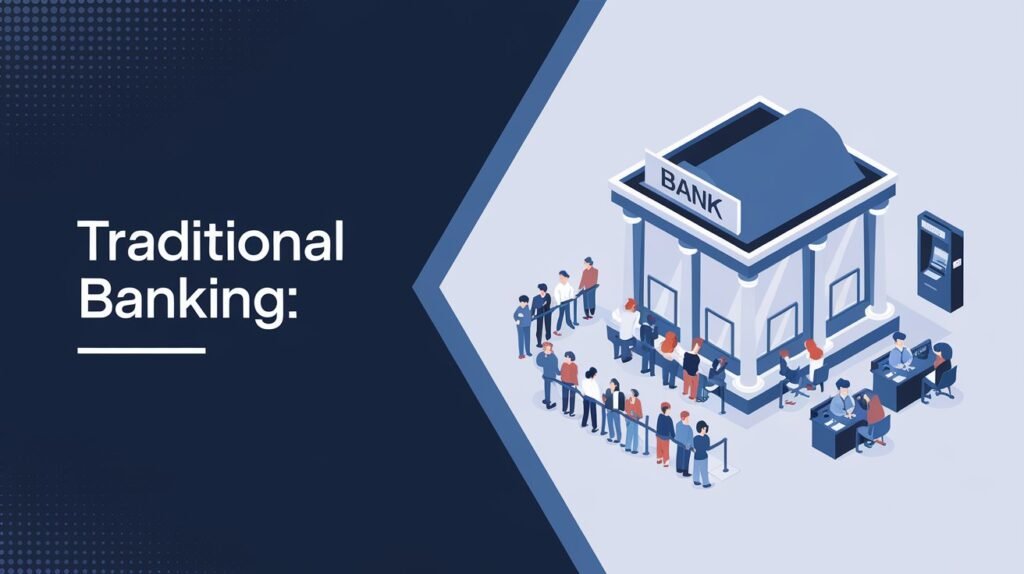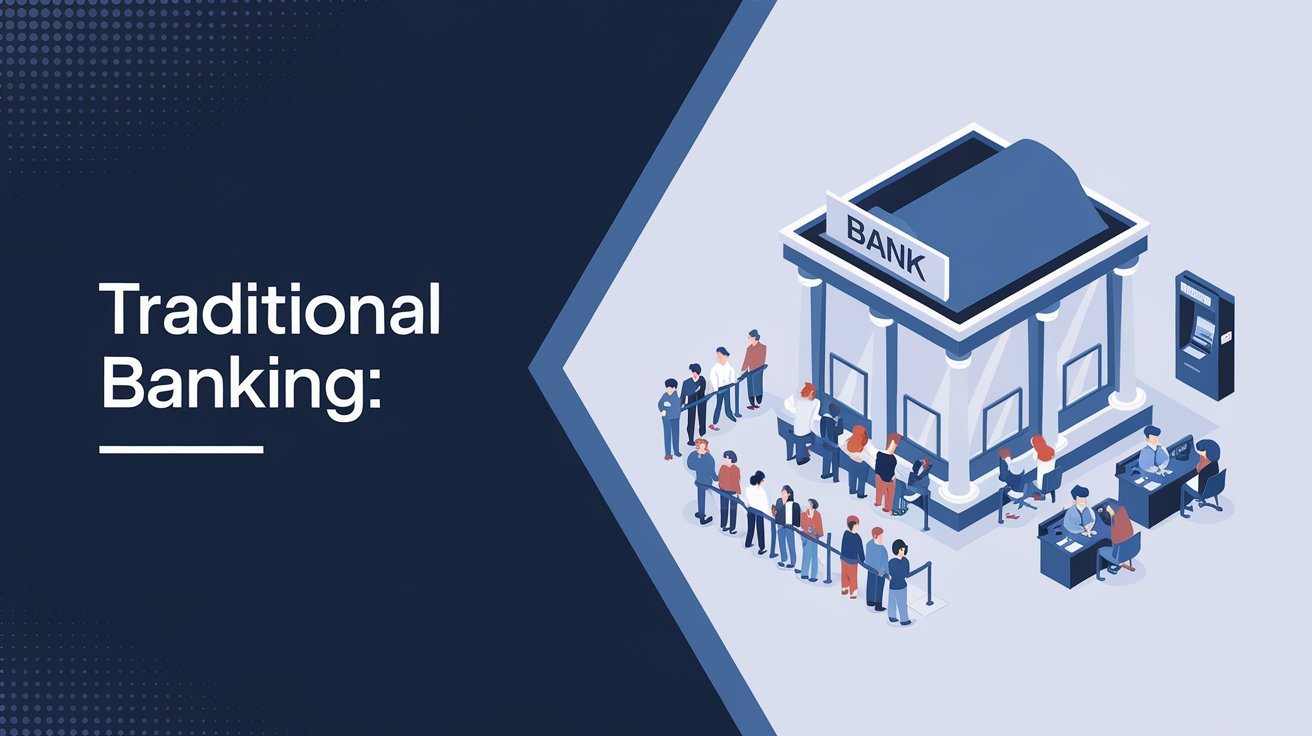In the ever-evolving world of finance, Traditional Banking—once the backbone of the global economy—is facing unprecedented challenges. While it was once synonymous with trust, stability, and regulation, modern customers are now shifting towards digital alternatives due to speed, convenience, and flexibility.
This article uncovers 3 alarming signs that signal the steady decline of banking. From digital disruption to customer dissatisfaction, the fall of brick-and-mortar financial institutions is both significant and inevitable.

3 Alarming Decline Signs
The 3 alarming signs that signal are:
1. Traditional Banking Struggles with Digital Disruption
How Digital Transformation is Disrupting Traditional Banking
The first and most significant sign of banking’s decline is its inability to keep up with digital innovation. Fintech startups, mobile wallets, and decentralized finance (DeFi) are quickly replacing the need for physical bank branches.
Key Reasons for Digital Disruption:
- Mobile-First Approach: Consumers prefer apps like Google Pay, PhonePe, and Paytm.
- 24/7 Access: Digital banks offer instant services without the need for in-person visits.
- Personalization: AI and data analytics allow neo-banks to offer customized financial solutions.
Table: Comparison of Traditional Banks vs. Digital Banks
| Feature | Traditional Banks | Digital Banks / Fintech |
|---|---|---|
| Access Hours | Limited (Mon–Fri, 9–5) | 24/7 Online Access |
| Account Opening | In-person, documentation-heavy | Instant, paperless |
| Customer Experience | Generic and bureaucratic | Personalized, AI-driven |
| Transaction Fees | High (hidden charges) | Low to zero fees |
| Service Speed | Slow (manual processes) | Fast (automated processes) |
| App/Tech Usage | Minimal or outdated | Tech-first, seamless |
2. Traditional Banking Faces Declining Customer Trust
Why Are Customers Losing Faith in Traditional Banks?
Trust—once the strongest pillar of traditional banking—is now under strain. With rising service charges, poor customer service, and hidden fees, users are questioning whether these institutions are still looking out for their interests.
Top Reasons for Trust Erosion:
- Hidden Charges: Many banks lack transparency in their pricing.
- Customer Service Failures: Long wait times and ineffective support.
- Lack of Innovation: Stagnation in product development.
People Also Ask
Q1. Why is traditional banking failing to meet modern needs?
A: Traditional banking systems are outdated, slow to innovate, and heavily reliant on manual processes, making them less appealing to tech-savvy consumers.
Q2. Are digital banks safer than traditional banks?
A: Digital banks are regulated similarly and often offer enhanced cybersecurity features, though both types carry risk and require due diligence.
3. Traditional Banking Suffers from Operational Inefficiency
The High Cost of Legacy Systems
Most traditional banks are built on legacy infrastructure—systems that are decades old. These systems are expensive to maintain and difficult to upgrade. As a result, operational costs skyrocket, eating into the bank’s profitability and competitiveness.
Challenges with Legacy Systems:
- Slow Deployment: New services take months to roll out.
- Cybersecurity Risks: Outdated systems are vulnerable to attacks.
- High Maintenance Costs: Constant updates and manual operations.
Table: Cost Breakdown of Banking Operations
| Expense Category | Average Annual Cost (USD) | Reason |
|---|---|---|
| Infrastructure Maintenance | $2–5 million | Legacy software upkeep |
| Staff Salaries | $3–7 million | Required for physical branches |
| Compliance & Regulation | $1–3 million | Manual auditing & reporting |
| Paperwork & Documentation | $500,000+ | Paper-based procedures |

Related: People Also Search For
- Digital Banking vs Traditional Banking
- Future of Traditional Banking
- Why Traditional Banking is Dying
- Best Online Banking Alternatives
- Fintech Companies in India
What is Traditional Banking?
Traditional banking refers to conventional financial institutions that operate through physical branches, offering services like savings accounts, loans, and customer support. These banks are governed by strict regulations and have historically provided the majority of financial services globally.
Example: State Bank of India, Punjab National Bank, and HDFC Bank are prominent examples of traditional banking in India.
Benefits and Limitations of Traditional Banking
Benefits
- Face-to-face interactions
- Regulatory oversight and security
- Long-standing trust with older generations
- Comprehensive financial services
Limitations
- Limited access hours
- High operational costs
- Lack of personalization
- Slower adoption of new technology
Future Outlook: Can Banking Survive?
While traditional banks are facing a steep uphill battle, survival is still possible—but only with transformation. Merging the old with the new through digitalization, partnerships with fintech, and enhancing customer experience could reverse some of the decline.
Strategies for Survival:
- Invest in cloud-based systems
- Offer hybrid physical-digital services
- Embrace open banking
- Reduce fees and increase transparency

Conclusion: Time to Rethink
The decline of traditional banking is evident through the digital revolution, customer trust issues, and inefficient legacy operations. The signs are clear—if traditional banks fail to adapt, they will crumble under the weight of disruption.
However, this isn’t the end. With smart investments and strategic innovation, traditional banks can regain relevance and even thrive in the digital age.
For more informative financial insights and updates on lifestyle and tech revolutions in Chandigarh and beyond, visit Chandigarh UT today!















